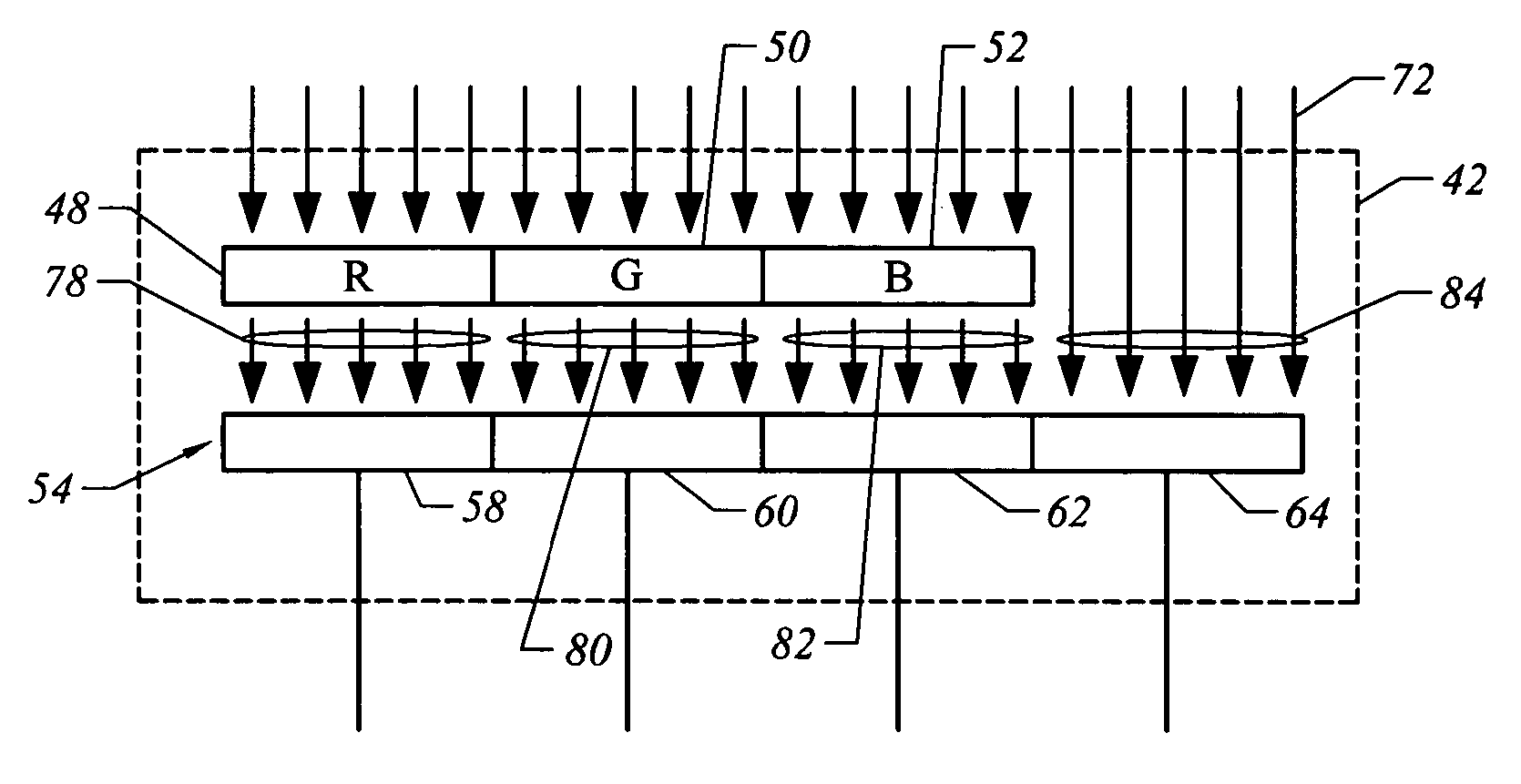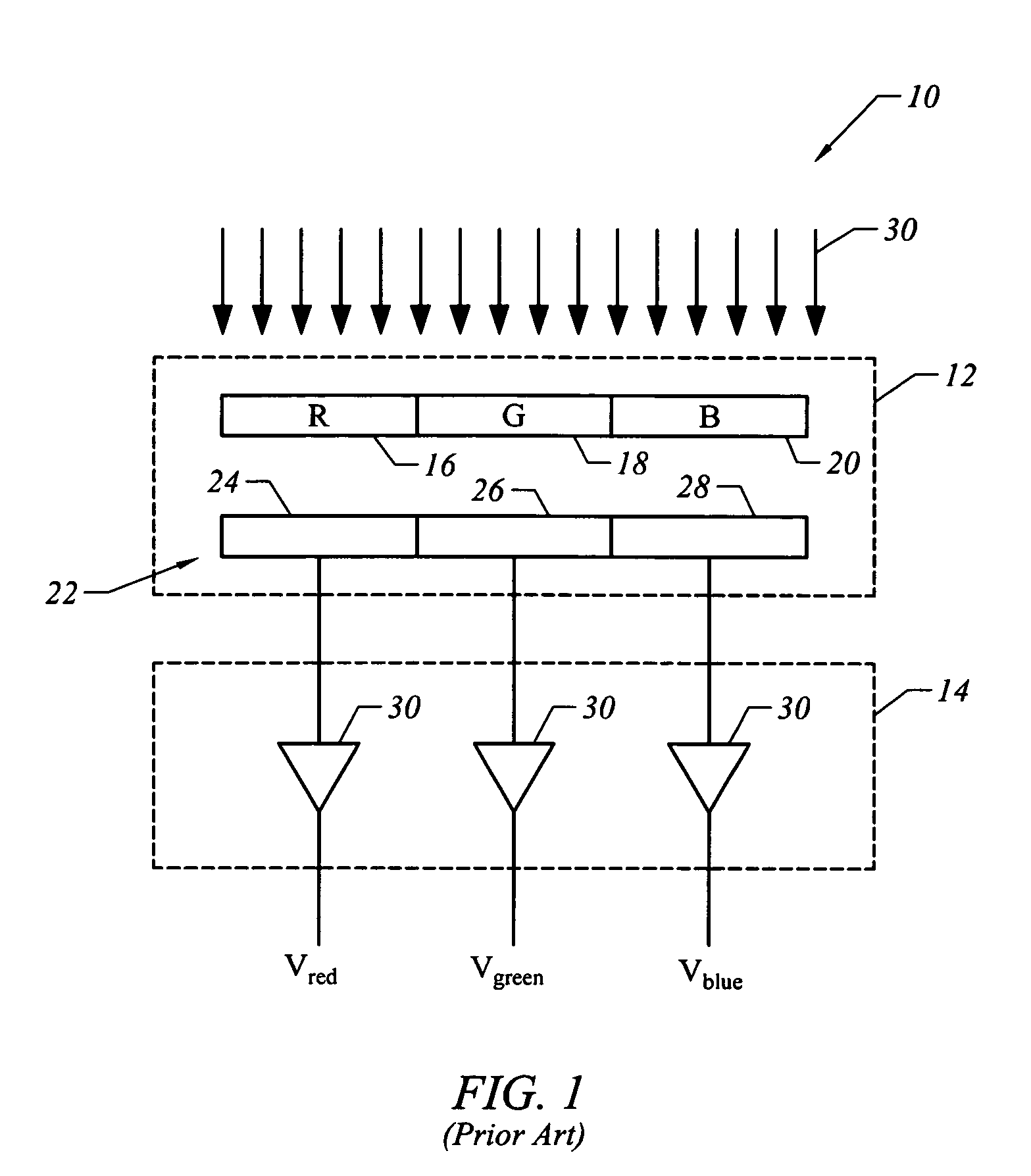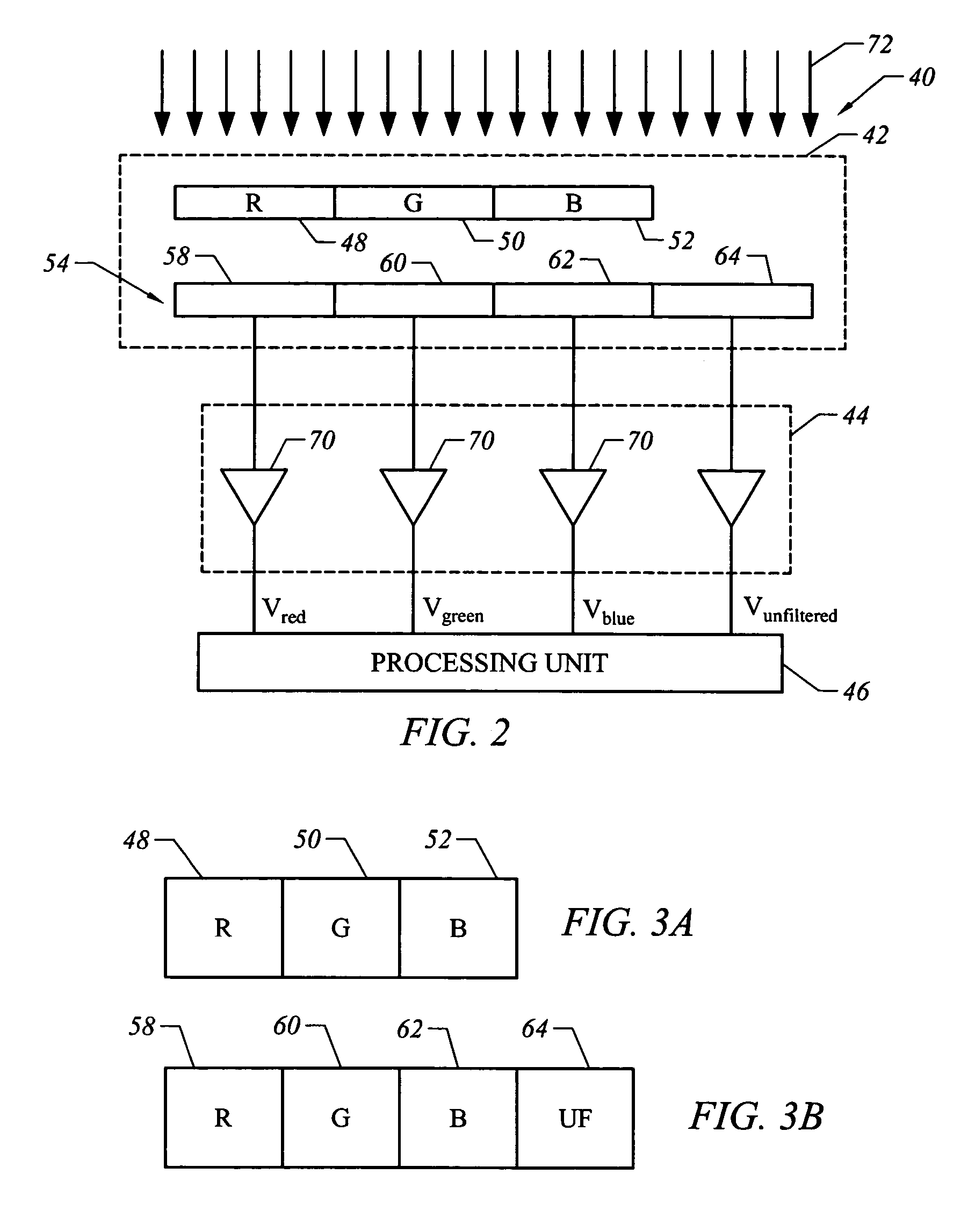Color sensor system with voltage offset correction
a color sensor and voltage offset technology, applied in the direction of optical radiation measurement, instruments, spectrometry/spectrophotometry/monochromators, etc., can solve the problems of offset voltages negatively affecting the performance of color sensors, signal skewed output from amplifiers,
- Summary
- Abstract
- Description
- Claims
- Application Information
AI Technical Summary
Benefits of technology
Problems solved by technology
Method used
Image
Examples
Embodiment Construction
[0014]Sensing color involves detecting a portion of incident light that is not filtered by a color filter in addition to portions of the incident light that are filtered by color filters. The output related to the unfiltered light is used along with the outputs related to the filtered light to correct for voltage offsets that effect the amplification of the outputs. FIG. 2 depicts an embodiment of a color sensor system 40 in accordance with the invention that detects unfiltered light in addition to filtered light. The color sensor system includes a sensor module 42, a post-sensor amplification unit 44, and a processing unit 46.
[0015]The sensor module 42 depicted in FIG. 2 includes color filters 48, 50, and 52 and a photodetector array 54. The color filters consist of red (R), green (G), and blue (B) filters. The filters may be, for example, bandpass filters that pass light in the respective R, G, and B spectrums. The color filters may be formed as pigment filters that are coated on ...
PUM
| Property | Measurement | Unit |
|---|---|---|
| sensing color | aaaaa | aaaaa |
| color | aaaaa | aaaaa |
| voltage | aaaaa | aaaaa |
Abstract
Description
Claims
Application Information
 Login to View More
Login to View More - R&D
- Intellectual Property
- Life Sciences
- Materials
- Tech Scout
- Unparalleled Data Quality
- Higher Quality Content
- 60% Fewer Hallucinations
Browse by: Latest US Patents, China's latest patents, Technical Efficacy Thesaurus, Application Domain, Technology Topic, Popular Technical Reports.
© 2025 PatSnap. All rights reserved.Legal|Privacy policy|Modern Slavery Act Transparency Statement|Sitemap|About US| Contact US: help@patsnap.com



